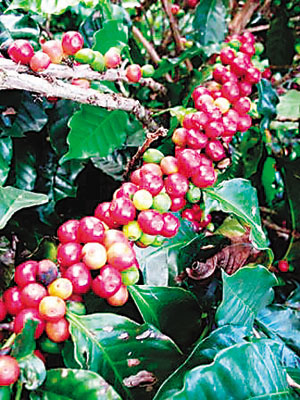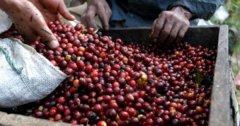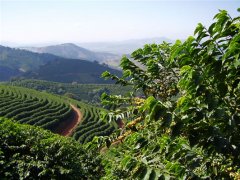Classification of coffee trees
In recent years, coffee producing countries no longer blindly pursue high output while neglecting quality. Many countries have begun to introduce a new coffee evaluation system in order to arouse the enthusiasm of producers and promote the production of fine coffee. For example, Brazil began to implement the Cup of excellence coffee rating system in 1999 in order to better subdivide boutique coffee. And boutique coffee has become one of the fastest growing markets in the catering service industry, reaching 12.5 billion US dollars in the United States alone in 2007. All these can see the potential of the boutique coffee market, and the boutique coffee market will certainly grow stronger and stronger in the future.
Coffee tree belongs to the evergreen tree of Rubiaceae. Since ancient times, most of the plants of Rubiaceae are plants with special effects, such as quinine tree, which is regarded as a specific drug for malaria, and Dugan, which is used to treat amoeba dysentery. Coffee is defined as the most unique alkaloid drinking flora.
The fruit of coffee is formed by the outer skin, pulp, endocarp, silver skin, and the seeds wrapped in the innermost layers (coffee beans). The seeds are located in the center of the fruit, and the parts outside the seeds are of little use. Generally speaking, there are two pairs of seeds in the fruit, but occasionally there is only one seed in the fruit, which is called fruit bean. In order to show symmetry, we call the fruit with two pairs of seeds as female beans. There are at least 40 "species" of the genus Coffee, among which the more practical cultivated species are three original species: plateau cultivation, lowland cultivation, and minimum cultivation.
Generally speaking, after two to three years of sowing, coffee trees can grow to a height of about five to ten meters, but in case coffee beans lose their aroma, taste bad, and are easy to harvest, farmers often repair them to about 1.5 to two meters. The change begins to bear fruit three to five years after sowing. The harvest period will be 20 years after the fifth year.
Coffee tree evergreen leaves, the leaf tip is more pointed, and is two opposite groups. The surface of the leaf is dark green, the back is light green, and the blooming flower is pure white. There are five stamens and one pistil in the flower, and the petals are usually five, but some have six or even eight petals. The flowers will give off a jasmine-like fragrance, but the flowers will wither in about three or four days. At first, the fruit is the same dark green as the leaf surface, but as it becomes more and more mature, it will turn yellow, then red, and finally crimson.
The circular zone between the Tropic of Cancer and the Tropic of Cancer is called Coffee Zone or Coffee Belt. Because the area is rich in rich organic matter and volcanic ash soil, the average temperature is about 20 degrees, the average annual rainfall is between 1000 and 2000mm, and there is no large temperature difference during the year, so it has become an ideal place for coffee production. Growing coffee should be strictly protected against cold, hot and dry wind and defrosting.

Important Notice :
前街咖啡 FrontStreet Coffee has moved to new addredd:
FrontStreet Coffee Address: 315,Donghua East Road,GuangZhou
Tel:020 38364473
- Prev

A brief history of coffee imported from Ethiopia introduces fine coffee
The origin of this plant can be traced back to millions of years ago, in fact, the real age when it was discovered can no longer be tested. It is only said that coffee is a shepherd named Kaldi in the highlands of Ethiopia. When he discovered that his sheep had inadvertently eaten the fruit of a plant, he became very lively and full of vitality, and then he discovered coffee. All historians seem to
- Next

The improvement of coffee taste and how to describe it
Boutique coffee is good coffee and is harmless to health. Unlike coffee made from low-quality coffee beans, boutique coffee uses high-quality coffee beans, freshly made coffee, which is harmless to health, but drinking in moderation is good for the body and mind, sour mocha, Hawaiian sour coffee, Mexico, Guatemala, Costa Rica high real estate, Gillimazaro, Colombia, Zimbabwe, Salva.
Related
- Beginners will see the "Coffee pull flower" guide!
- What is the difference between ice blog purified milk and ordinary milk coffee?
- Why is the Philippines the largest producer of crops in Liberia?
- For coffee extraction, should the fine powder be retained?
- How does extracted espresso fill pressed powder? How much strength does it take to press the powder?
- How to make jasmine cold extract coffee? Is the jasmine + latte good?
- Will this little toy really make the coffee taste better? How does Lily Drip affect coffee extraction?
- Will the action of slapping the filter cup also affect coffee extraction?
- What's the difference between powder-to-water ratio and powder-to-liquid ratio?
- What is the Ethiopian local species? What does it have to do with Heirloom native species?

